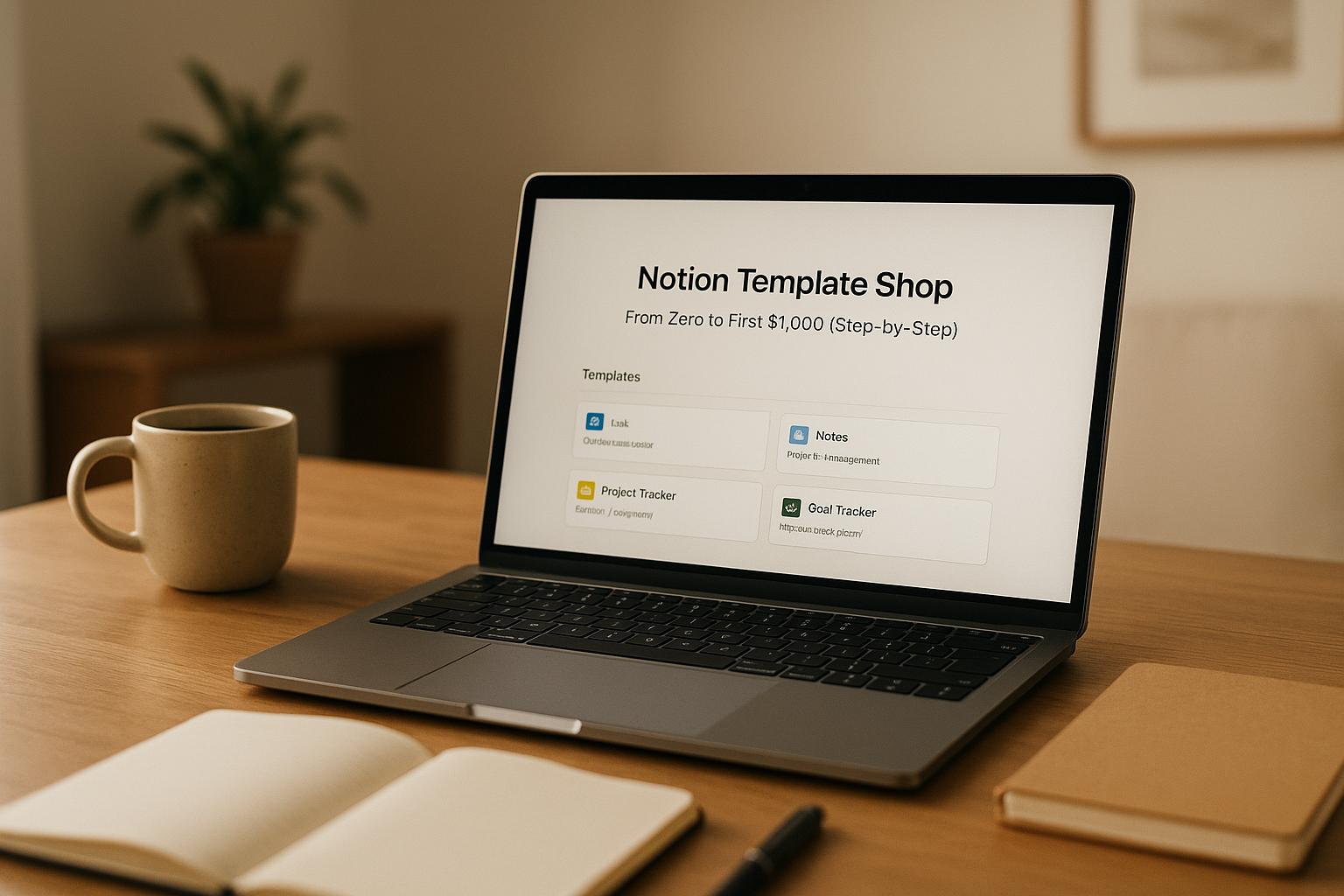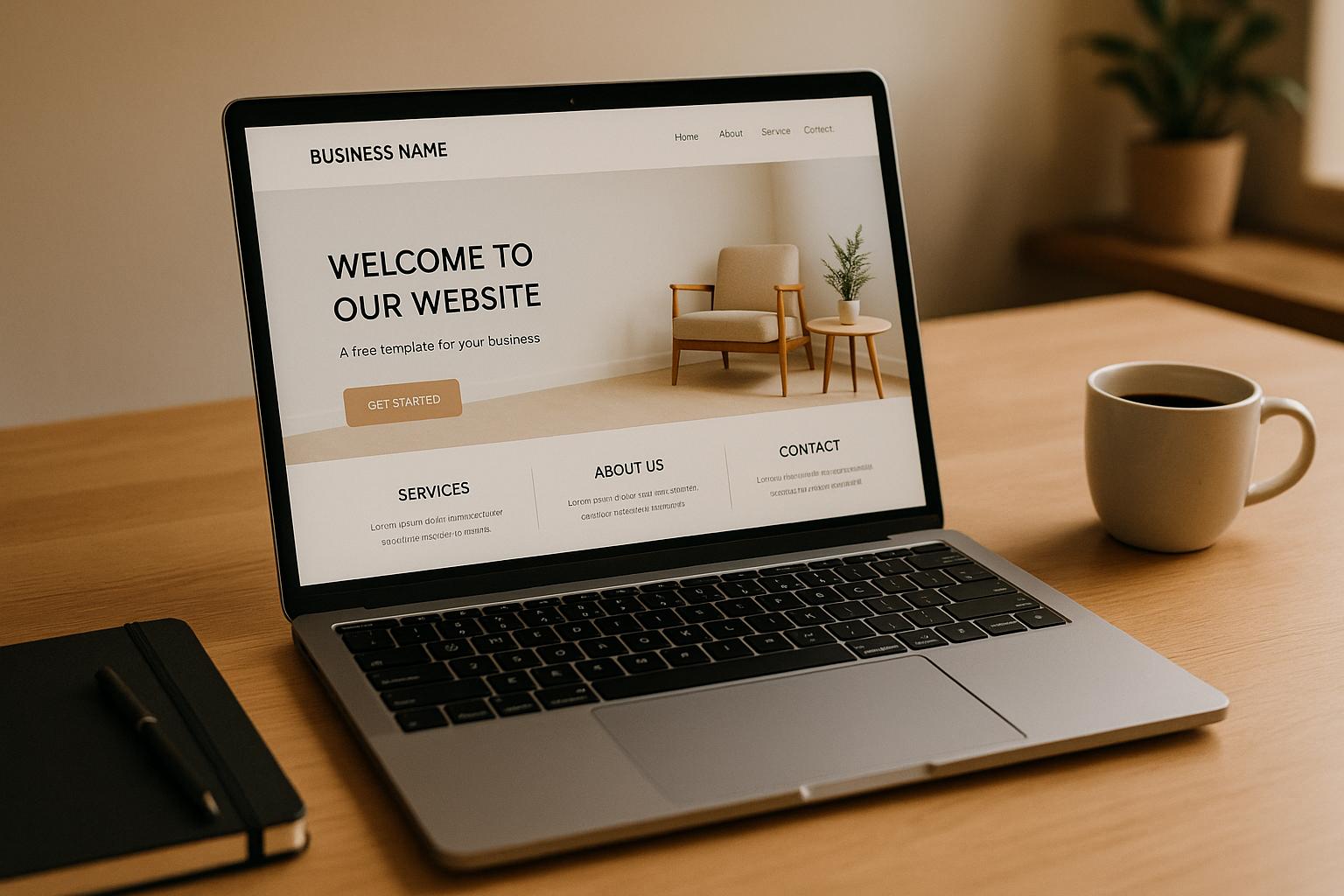
Want to avoid wasting money on a business idea that might fail? Here's the key: Test it first.
Most startups fail because they skip this step. Testing helps you understand if there's real demand, who your customers are, and whether your pricing makes sense - all before making big investments.
Why Testing Matters:
- 50% of small businesses fail in the first year.
- 35% fail due to no market demand.
- Examples like Seoul Taco show how small tests can lead to big success.
How to Test Your Idea:
- Talk to potential customers to learn their needs and pain points.
- Build a simple version of your product (like a mockup or spreadsheet).
- Use a landing page to measure interest with signups or clicks.
- Leverage tools like IdeaFloat for quick market insights.
Skipping validation can cost you time, money, and effort. Start small, test smart, and build confidence in your idea before diving in.
How to validate your startup idea before investing time and money?
When to Test Your Business Idea
Testing your idea is crucial to avoid failure. With 35% of startups failing because there's no market demand for their product or service , taking the time to validate your idea can save you from costly mistakes down the road.
No Clear Market Need
If you're unsure whether people genuinely need what you're offering, it's time to test. A "cool idea" isn't enough - you need evidence that customers are willing to pay for it.
Take KFC's success in China as an example. Before diving into the market, they conducted detailed research to understand local tastes. They adjusted their menu to align with these preferences. By 2017, this careful preparation resulted in over 5,600 locations and $5 billion in revenue in China alone .
"Validating a market need is one of the most important things a startup can do before sliding down the long startup roller coaster ride." – Itay Sagie, Strategic Advisor to Startups and Investors
Once you've confirmed there's demand, the next step is identifying your customers.
Missing Customer Profile
If you can't clearly define who your customers are, it's a red flag. Understanding your audience involves answering key questions:
| Aspect | Questions |
|---|---|
| Benefit Context | When and where do they need your solution? |
| Value Perception | How much are they willing to pay? |
| Behavioral Patterns | How do they currently address this issue? |
| Purchase Decision Factors | What drives their buying decisions? |
The goal isn't just to identify the benefit you provide but to understand the specific situations where customers want that benefit .
After identifying your audience, make sure your financial expectations are grounded in reality.
Unproven Business Numbers
If your pricing strategy or revenue projections are based on guesswork, it's time to validate. Testing is necessary when:
- Your cost structure is built on unverified assumptions.
- Pricing doesn't reflect what customers are willing to pay.
- Revenue projections lack supporting market data.
- Customer acquisition strategies are untested.
To address these gaps, run controlled experiments that focus on one variable at a time. Tools like A/B testing and customer surveys can help you gather real-world data instead of relying on assumptions.
As Ray Dalio wisely said, "The greatest tragedy of mankind is people holding on to wrong opinions…" . Testing ensures you're basing your decisions on facts, not guesses.
Test Your Idea Without Big Spending
You don't need a huge budget to validate your idea. There are plenty of low-cost tools and methods to get the job done.
Talk to Potential Buyers
Speaking directly with potential customers can provide insights that no survey or data report can match. Focus on their past actions rather than future predictions to get honest and useful feedback. Here are some key areas to explore during interviews:
| Interview Focus | Key Questions |
|---|---|
| Existing Solutions | How do they solve this problem today? |
| Pain Points | What frustrates them about current options? |
| Value Assessment | How much do they spend on current solutions? |
| Decision Process | What factors influence their purchasing choices? |
"Go in with a very open mind. Don't try to make something a problem, because if you do you're going to find the evidence to support it. Really just truly listen to what the person you're interviewing is actually saying and notice if there is a trend."
– Mahima Chawla, CEO and co-founder of Cocoon
Build a Test Version
Creating a basic version of your product can help you gauge interest without a big investment. Here’s a great example: Christina Cacioppo, CEO of Vanta, started with a simple spreadsheet to test their SOC 2 compliance solution. This approach allowed her to validate the idea before diving into development .
"Do all the product development best practices... Nobody wants to do them because they seem tedious, they're less fulfilling than building, and when you're excited, you just want to get started. But these steps make such a difference. It's so easy to change a spreadsheet or mockup; it's much harder to change code."
– Christina Cacioppo, CEO and co-founder of Vanta
Tools like spreadsheets or mockups are quick to adjust and perfect for early testing.
Test With a Simple Website
A landing page is another effective way to measure interest. Ryan Petersen of Flexport used this method to great success. Here’s what he did:
- Created mockup screenshots
- Built a basic landing page
- Ran small-scale Google ads
- Collected signups
This straightforward approach brought in over 300 company signups .
If you're testing with a website, consider these elements:
| Testing Element | Purpose |
|---|---|
| Email Signup Form | Measure genuine interest through action |
| Value Proposition | Experiment with different messaging styles |
| Price Testing | Check how much people are willing to pay |
| Feature Interest | See which features get the most clicks |
These practical steps can help you validate your idea and refine it before moving forward. Platforms like IdeaFloat can also assist in taking your testing to the next level.
sbb-itb-08dd11e
Digital Tools for Idea Testing
Digital tools can elevate your market analysis by providing detailed and quick insights. While low-cost tests help validate basic demand, these platforms go further, offering more comprehensive data to refine your ideas.
IdeaFloat: Testing Platform

IdeaFloat leverages AI and APIs to provide detailed metrics for idea validation:
| Feature | Purpose |
|---|---|
| Market Size | Estimate potential sales value |
| Customer Profiling | Identify your target audience and market share |
| Competitor Analysis | Gain insights into industry competitors |
| Validation Score | Assess the viability of your idea |
| Startup Cost | Calculate expenses and breakeven points |
"IdeaFloat saved us weeks of work by helping us explore demand for new products across different regions and took the guesswork out of finding gaps in the market. A must-have for entrepreneurs looking to scale." - Nick Sherwing, Founder of woohoPets
The platform has already helped over 500 entrepreneurs replace months of research with real-time data insights .
Testing Tools Overview
In addition to IdeaFloat, there are other tools that provide quick and reliable validation. Here's a comparison:
| Feature | IdeaFloat | Traditional Tools |
|---|---|---|
| Speed | Full analysis in minutes | Takes days to weeks |
| Data | AI + multiple APIs | Manual research |
| Cost | Free to $25/month | Varies widely |
| Metrics | Quantitative scoring | Often qualitative |
| Exports | Business plans, pitch decks | Limited formats |
Other tools like SparkRockets deliver validation roadmaps in just 90 seconds , while Checkmyidea-IA offers viability checks starting at $9.99 .
"With AI helping, you don't need to spend lots of time looking up information or doing research. It does the hard work for you, so you can focus on your business." - Checkmyidea-IA
When selecting a tool, look for features such as:
- Business guide-based validation tests
- Specific feedback for improvements
- Team collaboration capabilities
- Mobile-friendly access
- Integrated market data
The right tool should strike a balance between speed and depth, ensuring you get accurate and actionable validation results.
Testing Mistakes to Watch For
When you're validating your idea, it's easy to fall into traps that can distort your results and throw you off track. Here are some key areas to watch out for.
Trusting Limited Feedback
Relying too much on a small, familiar group for feedback can lead to biased decisions. Here's why certain feedback sources might not be as reliable as they seem:
| Feedback Source | Risk | Solution |
|---|---|---|
| Friends & Family | Overly positive bias | Seek input from people outside your circle |
| Single Customer Type | Narrow perspective | Engage with a diverse set of users |
| Peer Entrepreneurs | Focus on technical details, not buying intent | Prioritize feedback from your actual market |
"The most successful founders tend to work on ideas that few beside them realize are good. Which is not that far from a description of insanity, till you reach the point where you see results." - Paul Graham
To get feedback that truly matters, aim for a larger and more varied group of respondents. Ask open-ended questions, track responses carefully, and combine this with thorough market research.
Missing Market Research
Feedback alone won't give you the full picture. Skipping detailed market research can lead to missed opportunities and unnecessary risks. Companies like Coke have thrived by leveraging deep market insights.
Key steps in market research include:
- Talking directly to customers through interviews
- Exploring industry reports for secondary research
- Analyzing competitors to understand the landscape
- Measuring the market size
- Identifying customer needs and emerging trends
"The best companies and founders are the ones that aren't afraid to go out and get real, tangible feedback from potential customers." - Gil Ben-Artzy, Founding Partner, UpWest Labs
Dismissing Critical Feedback
Negative feedback might sting, but it often points to the areas that need the most attention. Here's how to make it work for you:
- Keep a clear, objective record of all feedback
- Look for recurring issues or themes
- Address the root causes of criticism
- Align feedback with your business goals
- Use it as a tool to refine your product or service
"Giving feedback is an art. It's not about what is said, but what is heard." - Michelle Claessens
Awards and media buzz might feel good, but they don't replace genuine validation . Focus on actionable input from real potential customers who fit your target audience.
After Testing: Moving Forward
With your idea validated, it’s time to act on the insights you’ve gathered.
Update Your Business Plan
Use the results from your testing phase to refine your business plan. Idea validation usually takes 8-12 weeks , giving you solid data to work with.
| Business Plan Component | What to Adjust | Next Steps |
|---|---|---|
| Value Proposition | Customer Feedback | Align with user needs |
| Market Size | Validation Data | Revise projections based on findings |
| Financial Model | Test Performance | Reassess costs and revenue estimates |
| Launch Timeline | Market Response | Adjust timing based on feedback |
These updates will help you create a more accurate roadmap for your next steps.
Prepare Launch Steps
Incorporate the insights you’ve gained into your launch plan and monitor key metrics like:
- User engagement
- Adoption trends
- Retention rates
- Product stickiness
- Churn rates
"IdeaFloat saved us weeks of work by helping us explore demand for new products across different regions and took the guesswork out of finding gaps in the market. A must-have for entrepreneurs looking to scale." - Nick Sherwing, Founder of woohoPets
Fine-tune your approach further with digital tools like IdeaFloat.
Use IdeaFloat for Planning
IdeaFloat offers tools specifically designed to turn your validation results into actionable plans, including:
- Detailed business summaries
- Financial projections
- Pitch deck creation
- Lean canvas models
"Any existing business that is considering scaling up or changing direction should be using IdeaFloat. It is an incredibly powerful tool." - Bernie Fitzsimon, Entrepreneur and Managing Director, LighthouseHQ
With IdeaFloat, you can analyze startup costs, conduct breakeven analyses, and set pricing strategies, ensuring your launch plan aligns with the insights from your testing phase.
Conclusion: Test First, Invest Second
The facts and examples shared here highlight one key takeaway: testing your idea is a must. Around 95% of new products fail . Launching a new product can cost over $100,000 initially and might climb to $1.5 million over five years . These numbers make it clear - validating your idea upfront is non-negotiable.
Gary Fox's journey with Host Butlers is a perfect example. Using tools like SurveyMonkey and targeted Facebook ads, he tested his business idea in Dublin. Within just two weeks, he received 30 positive responses, giving him the confidence to move forward . This real-world example drives home the importance of testing before committing.
"Market validation is the process of determining if there's a need for your product in your target market. Validating your business idea can enable you to reasonably predict whether people will buy your product or service, and whether your business will be profitable."
- Catherine Cote, Harvard Business School Online
Digital tools today make this process easier than ever. IdeaFloat, for instance, offers a complete platform for testing ideas. It helps assess market size and analyze breakeven points, giving you data-driven insights before making big investments .
"Any existing business that is considering scaling up or changing direction should be using IdeaFloat. It is an incredibly powerful tool."
- Bernie Fitzsimon, Entrepreneur and Managing Director, LighthouseHQ
Related Blog Posts
Get the newest tips and tricks of starting your business!


